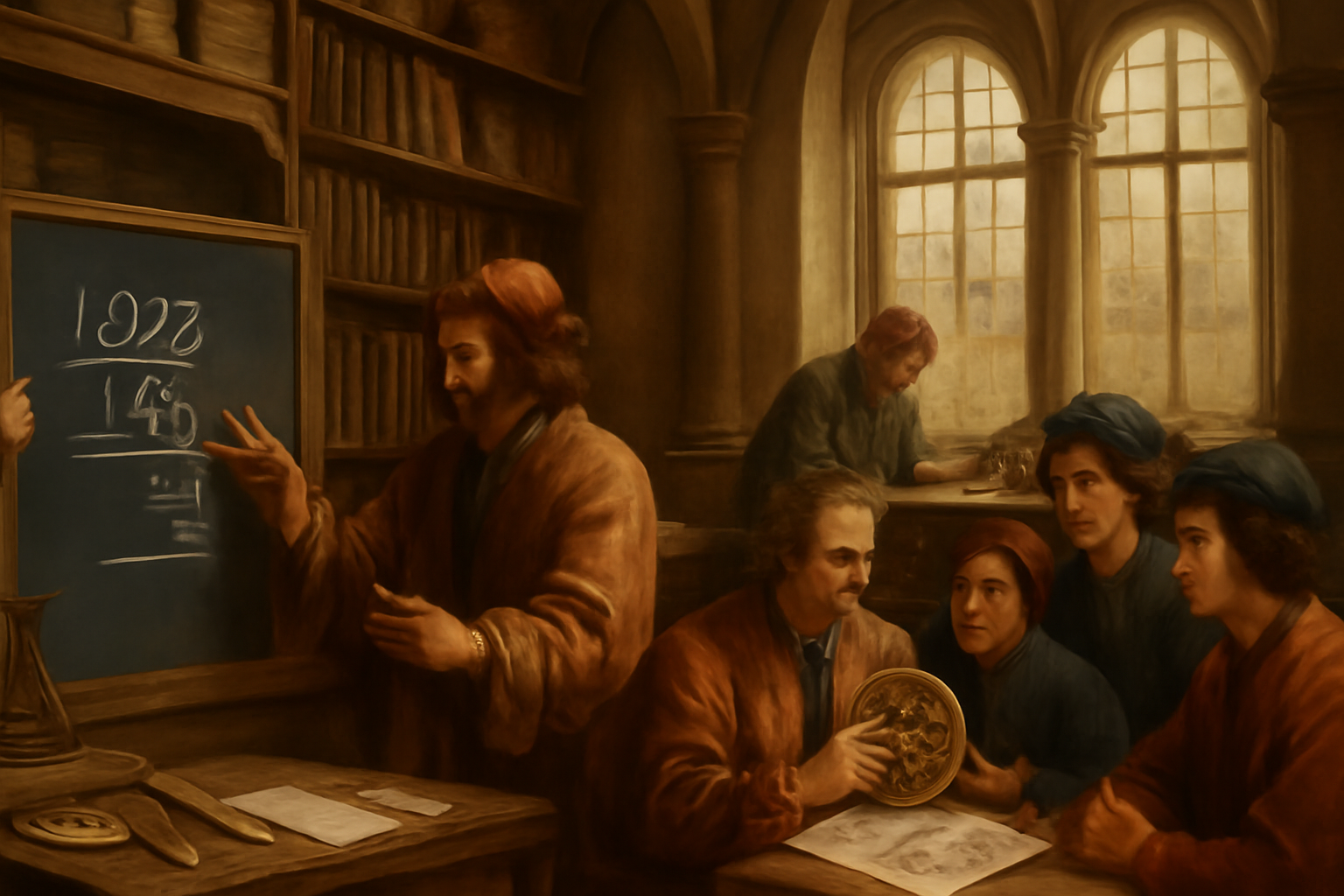Imagine Europe in the early 1500s—a time buzzing with curiosity, exploration, and the rediscovery of ancient knowledge. Among the many treasures unveiled during this Renaissance era was a remarkable breakthrough in how people understood and used numbers. In 1523, Simon Stevin, a brilliant mathematician from the Low Countries, introduced the world to decimal notation through his groundbreaking book La Disme. Before Stevin, calculations were cumbersome and error-prone, relying on fractions and Roman numerals. His innovative approach made arithmetic simpler and more precise, transforming commerce and science alike. With decimals, merchants could tally accounts with ease, explorers could chart seas more accurately, and scientists could perform calculations with newfound confidence.
Just a year after Stevin’s breakthrough, the Italian polymath Francesco di Giorgio Martini published De Re Militari, a pioneering work that bridged mathematics with military science and architecture. Martini, a skilled engineer and architect, demonstrated how mathematical principles could optimize fortifications, turning castles and city walls into impenetrable defenses. His insights were not just theoretical; they revolutionized military strategy at a time when Europe was fraught with conflict. Through Martini’s work, mathematics stepped out of the abstract and into the world’s battlegrounds, showing how numbers and geometry could safeguard kingdoms and shape skylines.
As the Renaissance blossomed, so too did a community of thinkers who recognized mathematics as more than a dry discipline. Niccolò Tartaglia, one of the era’s most passionate advocates for mathematical literacy, championed its importance for all walks of life—from master builders to sea navigators. Around this time, informal networks of mathematicians and scientists began to flourish across Europe. These early collaborations, fueled by correspondence and shared manuscripts, accelerated the spread of new ideas and allowed scholars to build on one another’s discoveries more rapidly than ever before. What started as isolated insights became a collective wave of progress, laying the groundwork for the mathematical tools we rely on today.
Together, these stories from the early 16th century tell of a remarkable transformation—where decimals, military engineering, algebraic thinking, and the spirit of collaboration converged to turn mathematics into a powerful and practical force for everyday life. It was a time when numbers were no longer just symbols but keys to unlocking the mysteries of the world.
